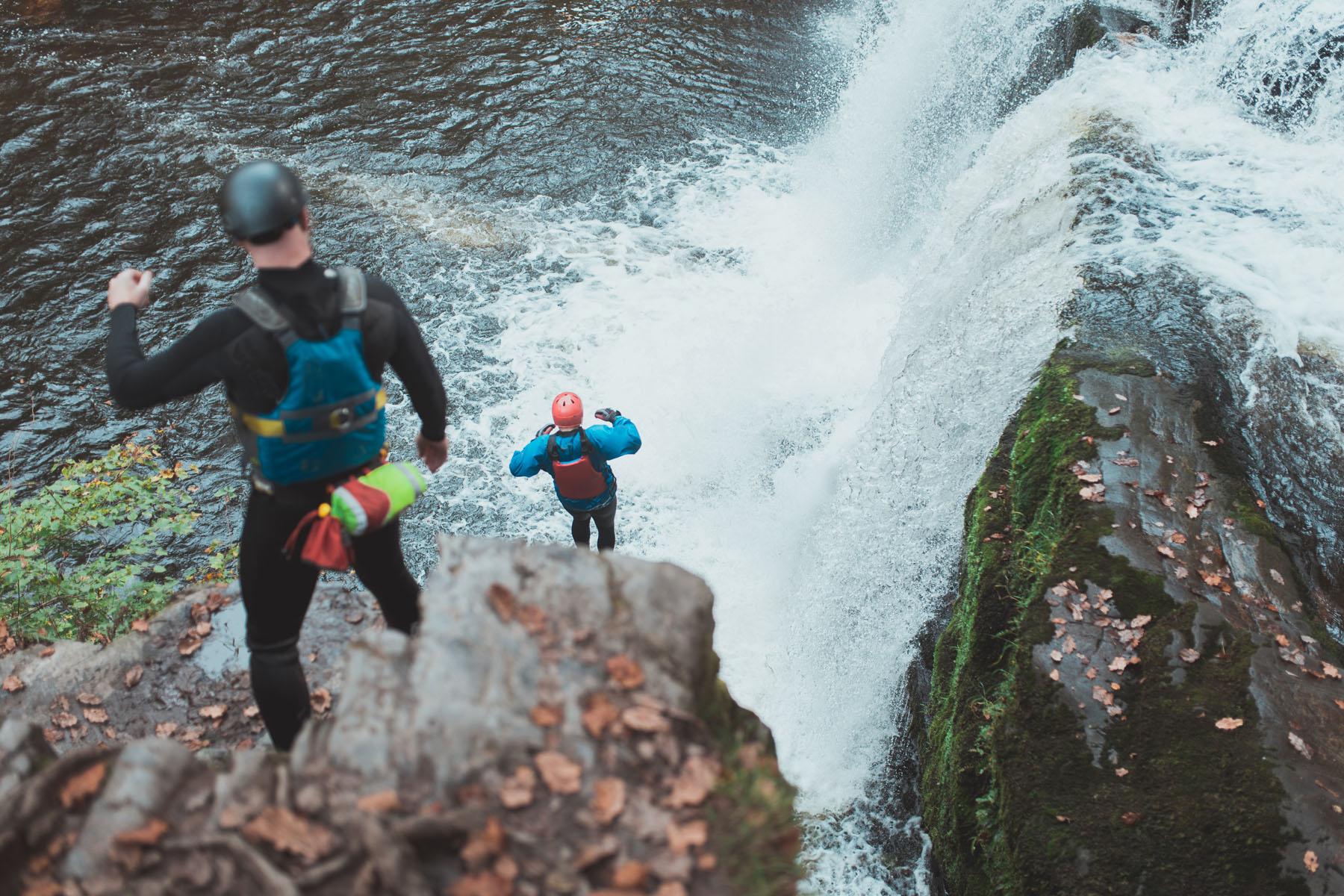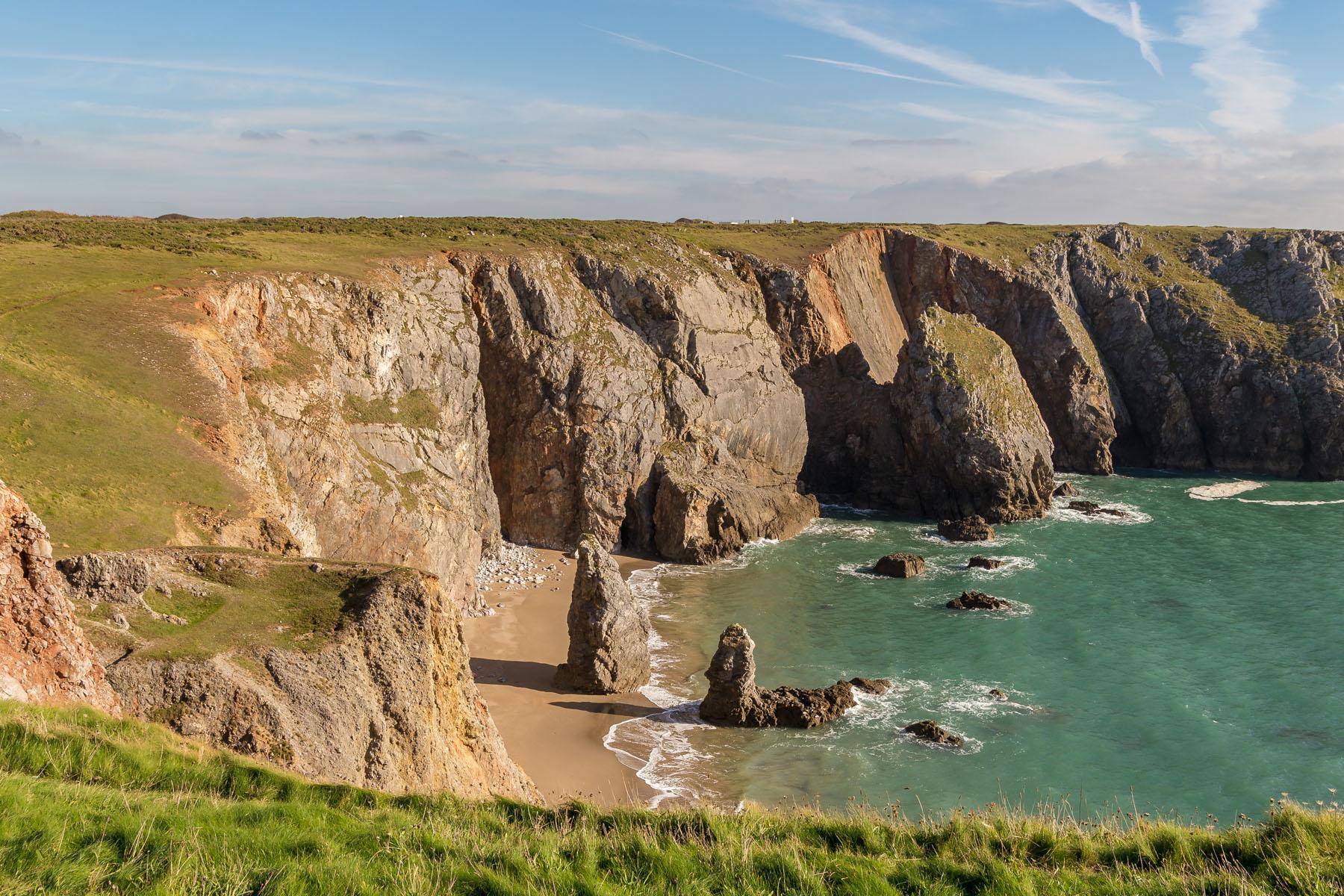This cold, wet sport is most commonly performed in the UK and it will push you to the limit.
Coasteering is an outdoor sport featuring rocks that can cut you and icy water that will make you forget you have limbs. Yet, here I am writing about how fascinating and eye-opening I found it.
Yes, it’s sorta-kinda just climbing rocks and jumping into the water below on the coast of, most prominently, UK countries like Wales. But when the rocks are jagged and unpredictable and the water is ice cold (even though you’re wearing a wetsuit), your heart skips 47 beats and suddenly you realize, “OK I get it, thrillseekers.”
TYF, who has been hosting guided coasteering tours in Pembrokeshire, Wales, for 30 years, describes coasteering as, “a mischievous combination that’ll see you walk, scramble, climb, swim, and cliff jump.”

The thing about coasteering is it’s hard. No, there aren’t any pre-learned skills necessary to perform the activity, but if you’re not in physical shape, I don’t recommend it. If you’re not comfortable stretching, I don’t recommend it. If you can’t swim, I definitely don’t recommend it. I honestly don’t know what I like about the sport, but I do know that there is something to like. It might be that feeling of discovery, seeing places like Wales in all of their natural glory, amplified by very chilly water—and you’ll get the opportunity to explore tiny caves and coves that are really only accessible by coasteering!
Recommended Fodor’s Video
The guides in charge of my recent trip—two friendly fellas from TYF—directed my group toward jumping points and advised the angle/spot in which we should aim to land in the water. They suggested we keep our hands and feet by our sides in a pencil-shaped manner when jumping. You’re jumping from a high place, so you want to make your landing as smooth (and as not painful) as possible. And, if you want to get the true coasteering experience, you WILL jump. Outside of those directions though, the experience was fairly hands-off.

While the elements of coasteering have been around for years, the activity was officially given its name in a book called Sea Cliff Climbing, a tome dedicated to introducing its readers to Great Britain’s “sea cliff climbing” in 1973 by John Cleare and Robin Collomb. Two decades later, the activity became commercial in Pembrokeshire. The jury’s still out on official competition, but if that does one day come to fruition, there’s no better destination than Wales.

Wales is a beautiful place filled with many a coast. Walking along the edge of the world reduces you to the tiny spec on this gigantic planet that you are. In that sense, coasteering is oddly reassuring; while I was doing it, I didn’t think about any issues other than, “How am I going to climb this slippery rock?”, “How cold is this water?”, and “Am I going to break every bone in my body on this jump?” Against these jagged cliffs, my problems and the everyday hurdles I face stood no chance of distracting me. Coasteering is primal, and it’s absolutely an experience that will take you out of your comfort zone. But that’s ultimately why we travel, right? So, I guess I do know what I like about it. Thank you for taking this climb with me.
You Should Know
TYF has a heavy amount of “leftover” shoes people decide to toss out (or forget) after trips in case you forget to bring proper ones; “proper” meaning shoes you can get dirty, wet or, um, destroy. You’ll also learn to cherish your helmet and life jacket. Oh! And, you probably shouldn’t bring your phone or camera for photos. The guides can provide you with some snapshots.
You Should Also Know
You might need to trek to the coast after suiting up at TYF’s base. There could be cows on said trek; you may be walking through a field in wetsuits; it will be low-key iconic.



